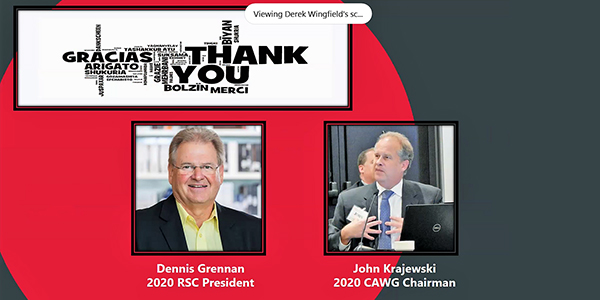SPP state regulators agreed Monday to keep up their collaboration with MISO regulators for the foreseeable future, saying the effort is pressuring the RTOs to resolve their seams issues.
“I’d hate to see us pull back at this point,” said the Missouri Public Service Commission’s Scott Rupp during the Regional State Committee’s (RSC) quarterly get-together. “It would be like Christopher Columbus seeing land and saying, ‘Cool. Land,’ and then turning around and going home.”
Rupp spoke for most on the RSC, which supplies four of its members to the Seams Liaison Committee (SLC), where they work alongside counterparts from the Organization of MISO States (OMS).
The SLC recently drafted a list of recommendations to improve operations along the SPP-MISO seam. However, RSC members are not yet ready to sign off on the proposals, which prioritize resolving rate pancaking and adding a category for smaller interregional projects. (See MISO, SPP Regulators Call for Pancaking Fix, Smaller Projects.)
“I am feeling like this [recommendation] document could be improved,” said Texas Public Utility Commission Chair DeAnn Walker, who leads the SLC’s RSC representation. “Maybe I could work … to come up with a document that’s a little bit clearer and presents things where we could move on.”
“If it wasn’t for the Seams Liaison Committee, many of these issues would not be moving forward,” said fellow SLC member Geri Huber, who chairs the Iowa Utilities Board. “I think its’s important to work with the OMS and put together a proposal. … I think we as commissioners should take the lead in pushing MISO and SPP in addressing all these issues we see as a priority.”
Confusion set in over a document drafted by OMS Executive Director Marcus Hawkins. The document attempts to lay out the SLC’s seven recommendations to improve seams operations, but also re-ordered a previous document drafted by Arkansas’ Ted Thomas.
The RSC agreed that the majority of the proposals are being handled by the RTOs’ market monitors or will be addressed by the SPP-MISO joint transmission study, which is only now taking shape. Members agreed that leaves them with little to do besides monitoring progress and encouraging collaboration.
“The two live wires become rate pancaking and [smaller interregional projects],” Thomas said. “When you reduce the pancaking, that leaves a hole in the [transmission] revenue requirement that needs to be filled. There isn’t a solution we can adopt.”
Thomas said he would like to see the RTOs sit down with each other and stakeholders and negotiate, but added, “We can’t compel people to negotiate.”
He said the SLC’s role in developing smaller interregional projects should be “facilitation.” The proposal is based on the Targeted Market Efficiency Projects used by MISO and PJM.
“MISO folks that see the value have to come up with the mechanism that shares benefits,” Thomas said.
The committee agreed to set aside time to further discuss the recommendations during the public portion of a conference call on Feb. 12.
RSC Approves CAWG Recommendations
The RSC unanimously approved a pair of recommendations brought forward by its Cost Allocation Working Group:
-
-
- a proposed tariff change (RTWG RR436) that removes all facilities associated with an interconnection study performed by the Integrated System prior to it joining SPP in 2015. SPP had subsequently completed a study that resulted in different network upgrades.
- endorsement of a Supply Adequacy Working Group SPP MOPC Briefs: Oct. 13-14, 2020.)
-
The committee also once again engaged accounting firm Landmark to audit the RSC’s 2020 finances.



